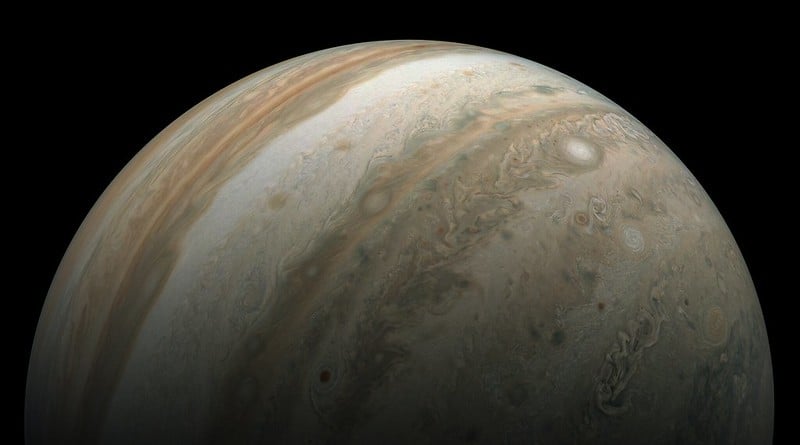As originally planned, Juno's 37thclose pass by Jupiter – called Perijove 37 – would have been its last. Per the original mission outline, the Juno spacecraft would have been programed to plunge into Jupiter on Perijove 37 as a mission-ending self-sacrifice. Destroying Juno would protect the Jovian moons -- especially Europa -- from potential future contamination by an unpowered spacecraft wandering adrift through the Jupiter system. As careful as NASA is about taking precautions to limit the amount of Earth-sourced biological material carried by robotic spacecraft, it's incredibly difficult to ensure that no microbes might have tagged along.
But, back to Juno: as it stands now, the Juno mission is just getting started. With a mission extension granted earlier this year, Juno will continue to operate until at least 2025, with 42 extra orbits added to the mission.
And thank goodness, because the images from Perijove 37 are pretty stunning. The new mission plan put Juno on a relatively close pass to image Jupiter itself, as well as a great view of Jupiter's moon Europa, see below.
Loading tweet...
— View on Twitter
?ref_src=twsrc%5Etfw%7Ctwcamp%5Etweetembed%7Ctwterm%5E1450688531370807300%7Ctwgr%5E%7Ctwcon%5Es1_c10&ref_url=https%3A%2F%2Fembedly.forbes.com%2Fwidgets%2Fmedia.html%3Ftype%3Dtext2Fhtmlkey%3D3ce26dc7e3454db5820ba084d28b4935schema%3Dtwitterurl%3Dhttps3A%2F%2Ftwitter.com%2Fb_swift%2Fstatus%2F1450688531370807300image%3Dhttps3A%2F%2Fi.embed.ly%2F1%2Fimage3Furl3Dhttps253A252F252Fabs.twimg.com252Ferrors252Flogo46x38.png26key3D3ce26dc7e3454db5820ba084d28b4935Loading tweet...
— View on Twitter
Our thanks go to all the incredible citizen science image editing gurus out there working on the JunoCam images, including the ones featured here by Kevin Gill, Brian Swift and Andrea Luck. Make sure you check out their Twitter feeds (and their Flickr pages linked in their tweets). Plus you can see all the images that have been taken and processed from people around the world at the JunoCam website.
While Juno has so far focused most of its attention on the giant planet, the mission extension includes observations of Jupiter's rings and large moons, with targeted observations and close flybys planned of the moons Ganymede, Europa, and Io.
This will be the first close flybys of these moons since the Galileo mission in 1995-2003.
?s=20Loading tweet...
— View on Twitter
Loading tweet...
— View on Twitter
Need a new phone wallpaper? Kevin Gill has you covered:
Loading tweet...
— View on Twitter
Juno arrived at Jupiter in July of 2016, and originally, the projected end of the mission was February of 2018, because of how close the spacecraft was going to be to Jupiter and its radiation-laden environment. The harsh "working conditions" were expected to eventually make the spacecraft inoperable. But the mission plan was changed when problems arose with the spacecraft's main engine shortly after Juno's arrival at Jupiter. Instead of the close-in 14-day orbit originally planned, the orbit was changed to 53-days, slowing down the pace of science observation and the radiation exposure. Both have made the mission last longer, for which we are overjoyed.
 Universe Today
Universe Today
